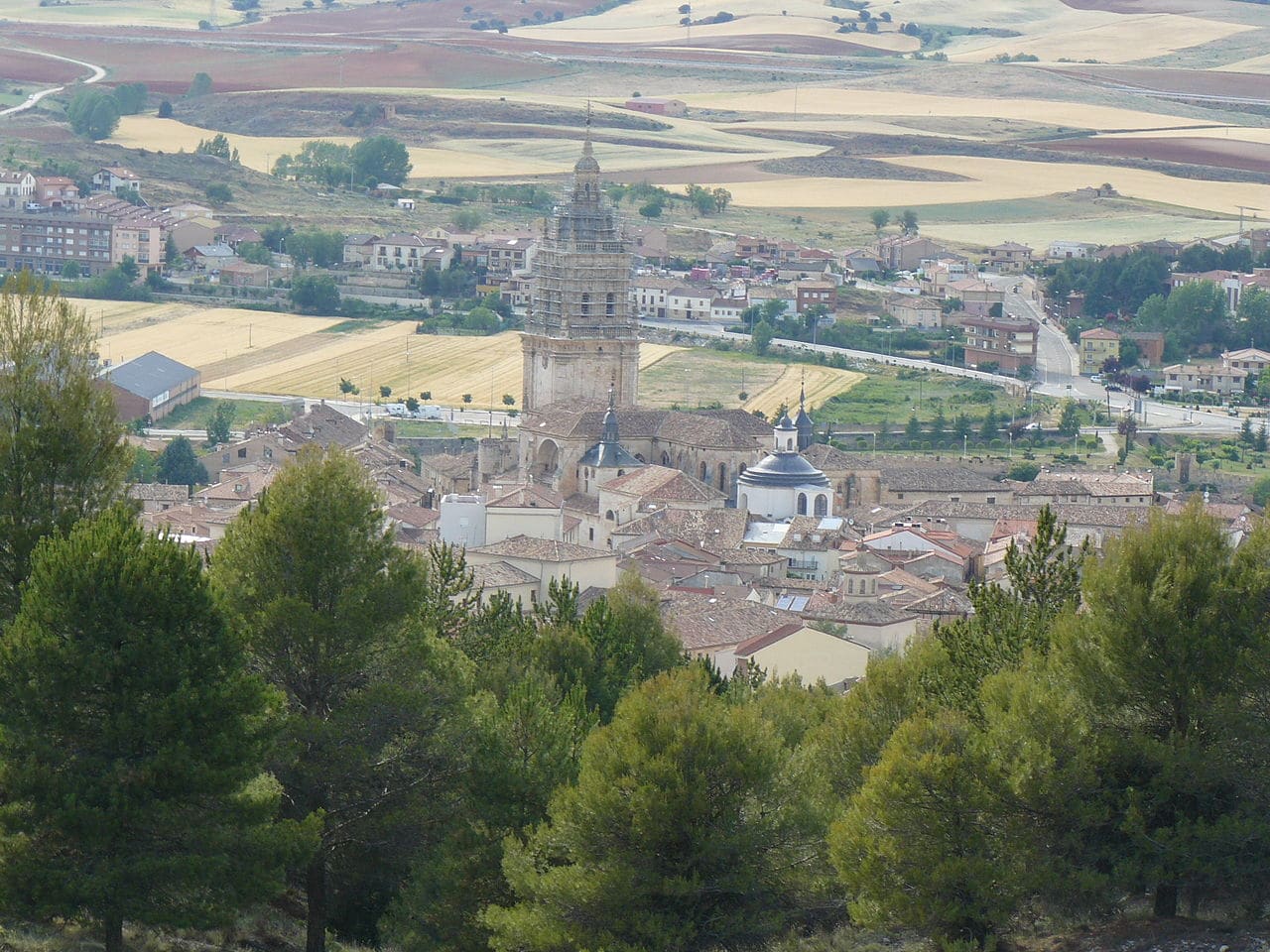
Burg of Osma
Burgo de Osma (or El Burgo de Osma) is one of those jewels scattered around Spain and little known to mass tourism. This small town in the province of Soria has a history dating back to pre-roman times and continues through the Middle Ages and the Renaissance and that has given it a lovely historic helmet full of monuments.
Declared Historic Artistic Set in 1993, Burgo de Osma is located on the banks of the Ucero river almost half a mile above sea level. It is a privileged area where you can find two places of community interest due to their nature: the Sabinares Sierra de Cabrejas and Banks of the Duero River and Tributaries.
What to see in Burgo de Osma
But, if the town of Soria will surprise you for something, it is because of its impressive monumental heritage. On the Castro hill are the remains of uxama argaela, the ancient pre-Roman city that gave rise to Burgo de Osma. And, already in the urban area, you can see the architectural jewels that we are going to show you.
Cathedral of Saint Mary of the Assumption
Built in the XNUMXth century on a previous Romanesque one, it is of Gothic style. On the outside, the façade stands out, with its impressive rose window and the bell tower, built in the 1086th century following the neoclassical canons. Regarding the interior, along with precious altarpieces, you can see a miniature manuscript codex from the year XNUMX.
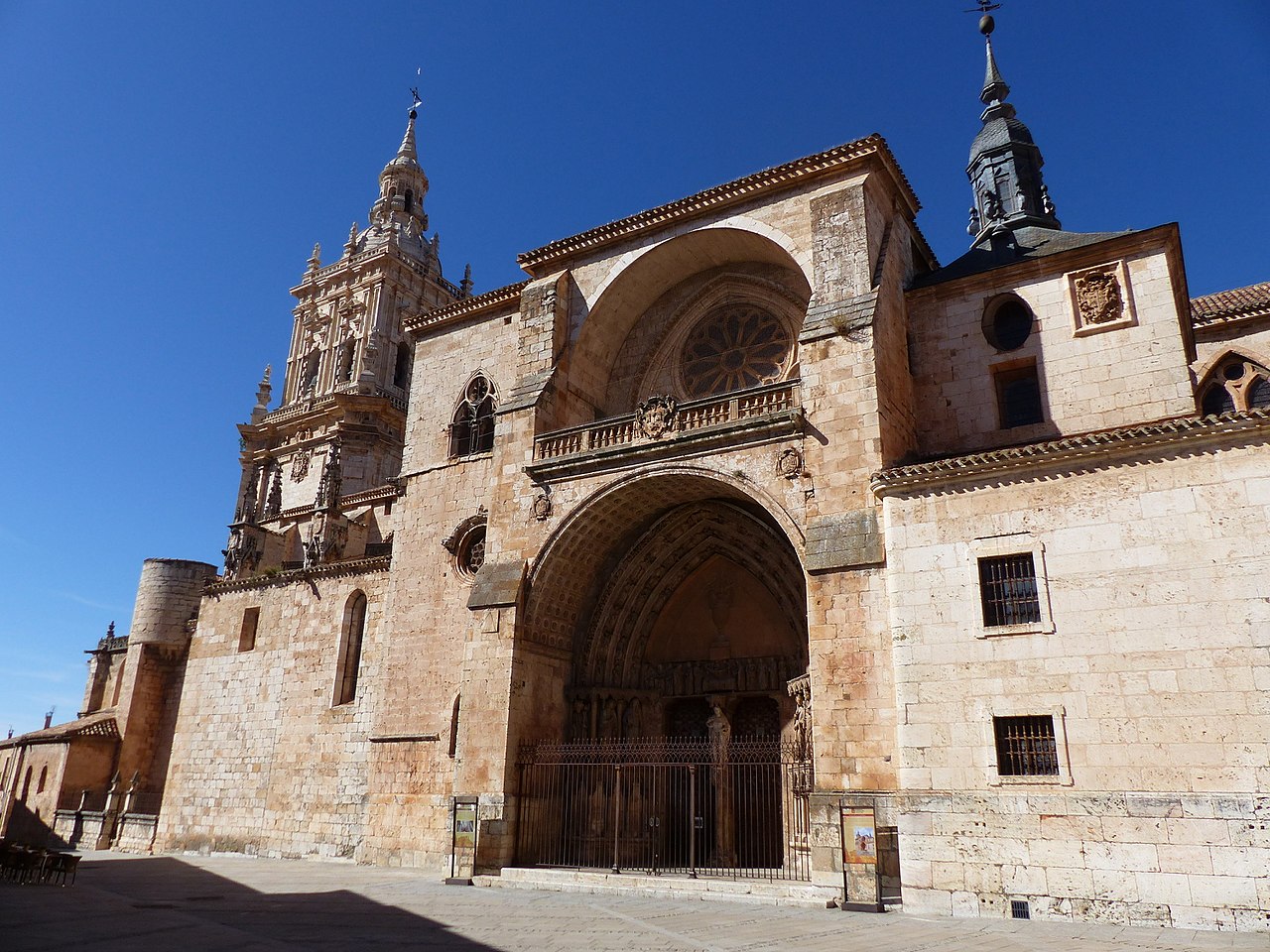
Cathedral of Saint Mary of the Assumption
Main Street
It communicates the cathedral itself with the Plaza Mayor and it is porticoed. It constitutes the nerve center of life in Burgo de Osma. In it you can find numerous typical Castilian inns They offer wines and tapas. Likewise, Ruiz Zorrilla street leaves from it, which in turn will take you to the beautiful porticoed plaza of Santo Domingo, in which is the popular Monkey Fountain. Finally, on Calle Mayor you can see a section of the old wall from the city and numerous samples of popular Castilian architecture.
Plaza Mayor
After passing through the previous one, you will arrive at the Plaza Mayor, a marvel baroque from the XNUMXth century in which the traditional arcaded houses of Castile stand out and, above all, two monuments: the old Hospital of San Agustín, which copies the style of the Austrian period fortresses, and the Town hall, with its two symmetrical towers.
Convent of Carmen
It has a church built in the early seventeenth century in which you can see a carving of the Virgin of Carmen which is venerated throughout the municipality. It also has a beautiful organ French style made in the XIX.
University of Santa Catalina, another of the symbols of Burgo de Osma
This Plateresque gem was built by the Portuguese bishop Pedro Alvarez de Acosta when he held this position in Burgo de Osma. It is square in plan around a beautiful courtyard of columns o Rencentist style cloister from which an impressive staircase starts. It was a teaching center until the XNUMXth century and figures such as Jovellanos o Basilio Ponce de Leon. Currently you can stay in it, since it is a hotel.
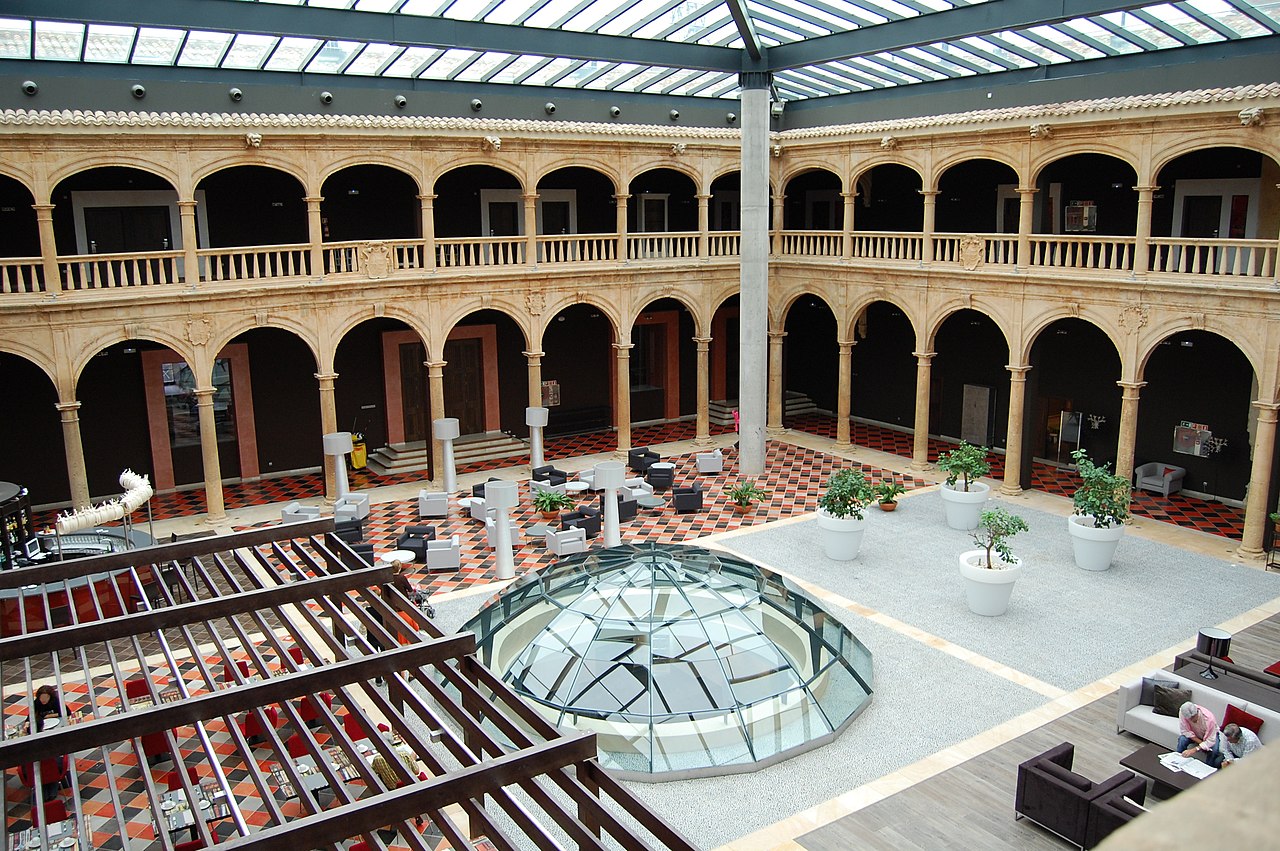
Cloister of the University of Santa Catalina
Seminary of Santo Domingo de Guzmán
This neoclassical marvel was built by Joaquin de Eleta, confessor of King Carlos III and his plans were drawn up by the great Francesco Sabati. Inside, it houses a valuable library of more than twelve thousand copies, some of them incunabula.
Castle of Burgo de Osma
Currently in poor condition, it is on the top of a hill overlooking the city. It was built between the XNUMXth and XNUMXth centuries, although it was reformed in the XNUMXth. It consists of three superimposed enclosures of which the exterior has several watchtowers or guard posts.
According to legend, he arrived at the castle disguised as a merchant Fernando of Aragon, who fled from the Marquis of Villena and was on his way to marry Isabel of Castile. The guard at the gate did not recognize him and shot him an arrow that nearly killed him.
Other monuments of Burgo de Osma
You can also see in the Castilian town the Roman bridge on the Ucero river, which is located next to the church of Santa Cristina de Osma, a beautiful Romanesque temple that houses the relics of this saint.
Finally, the city is part of the Route of the Cid, more specifically the section called El Desierro. It is a cultural tourist tour based on the march into exile of the Castilian leader.
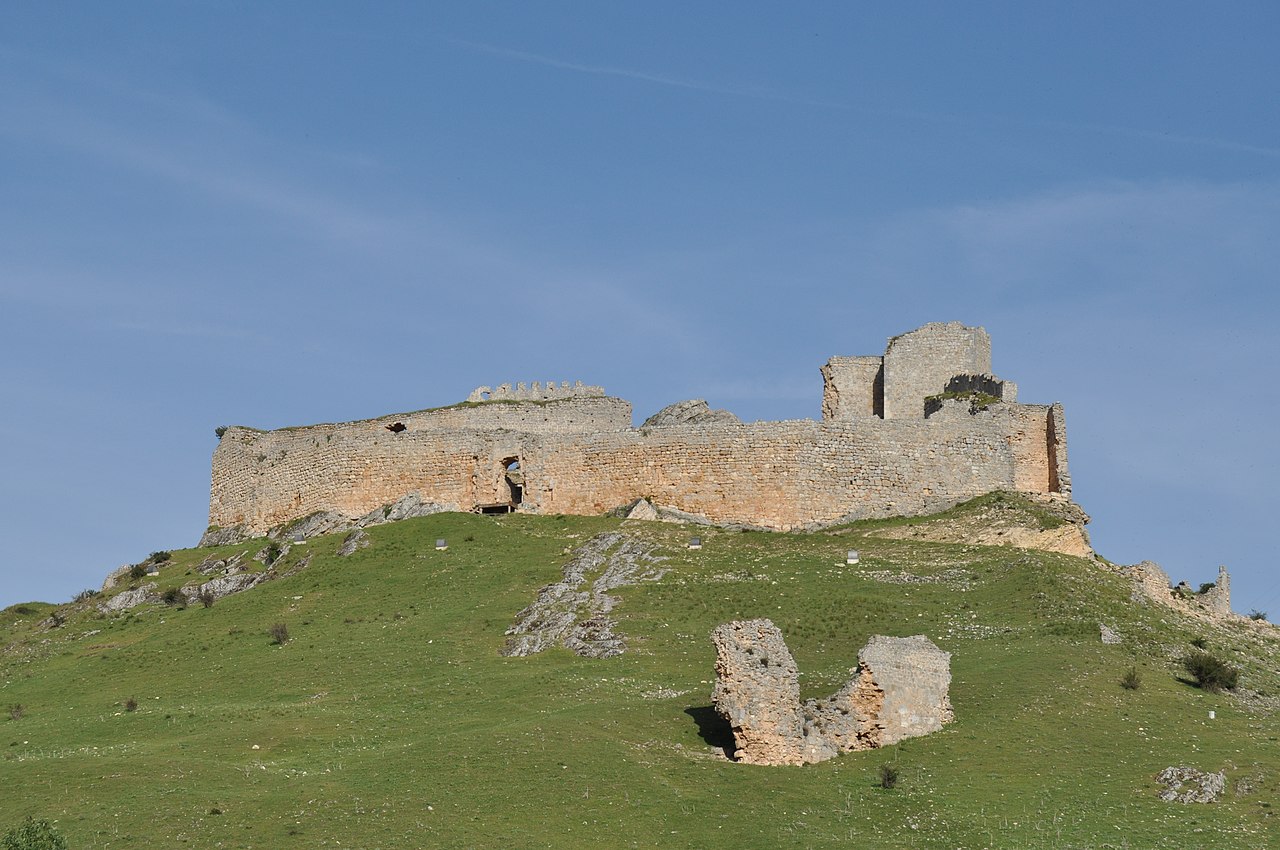
Castle of Burgo de Osma
What to eat in Burgo de Osma
After contemplating so many monuments, you cannot leave Burgo de Osma without trying the delicious gastronomy of Soria. They are famous thistles of the area and also the bean, which are prepared with pig's ear.
Other typical dishes are suckling lamb or roast suckling pig; the hat, which is lamb's blood seasoned and cooked on the grill; the sweet blood sausage, which has sugar and raisins or pickled quail. And also the compote partridges; and shepherd's crumbs; The chanterelles casserole, a very abundant mushroom in the area; the chanfaina and, of course, the torreznos.
As for the fish, they are prepared smoked and grilled trout, cod al ajoarriero or in figón y pickles. Finally, the confectionery stands out for being made with Soria butter, which has a designation of origin. We recommend that you try the puff pastry sobadillos, floury and sleeping cake with anise.
Finally, regarding the gastronomy of Burgo de Osma, you should know that the weekends of February and March take place in the town the days of the viceroy's massacre, which are declared of Tourist Interest.
When is it better to go to Burgo de Osma
The truth is that any time of the year is good for you to visit the town of Soria. Its climate is not bad, although the winters are cold and the summers hot. It is also true that rainfall is frequent. But there are never extreme temperatures that you might dislike.
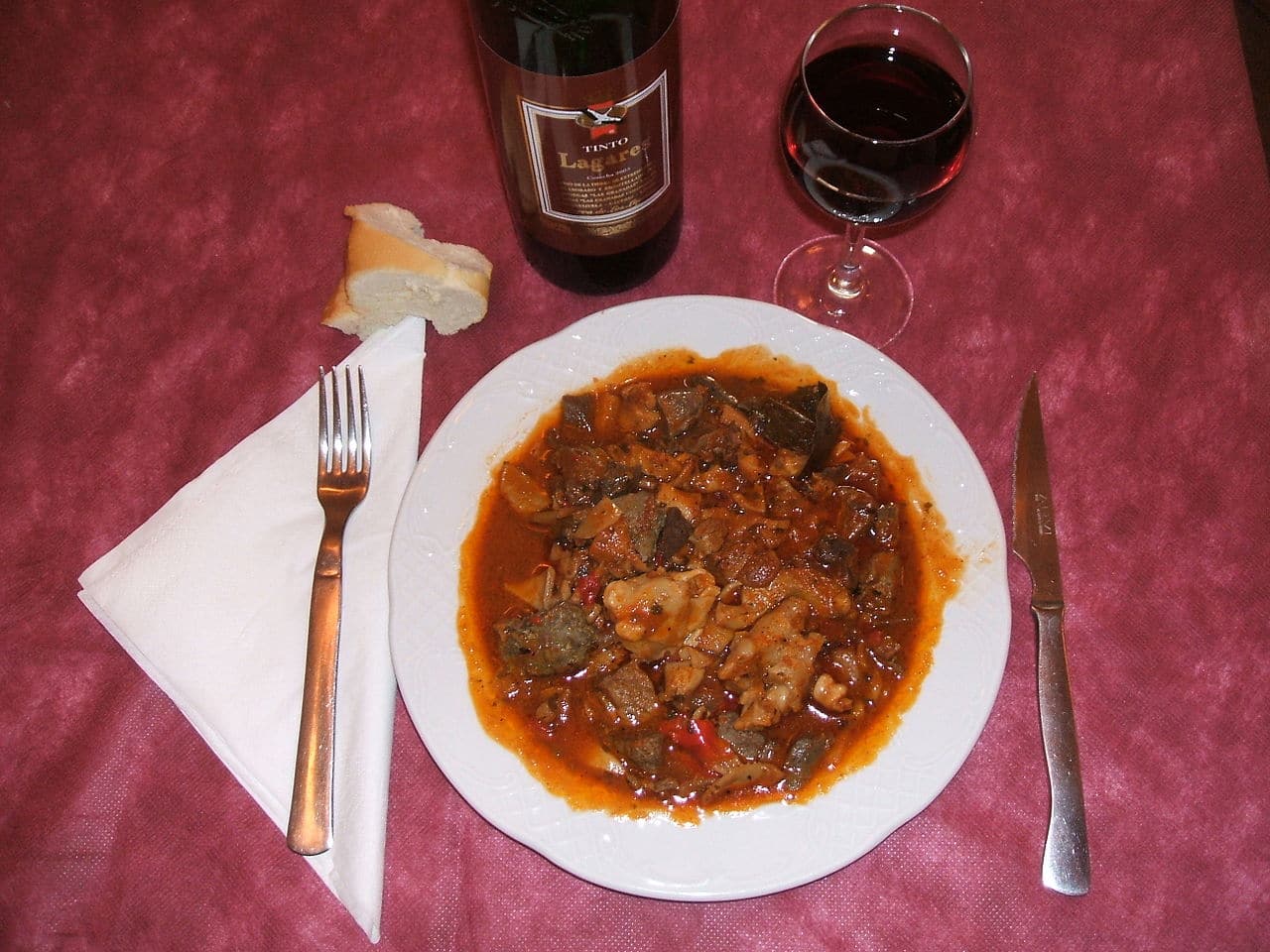
chanfaina
In any case, good dates are eastern, which has been declared of Regional Tourist Interest; the Corpus Christi, when the villa is decorated with flower rugs, or the festivities of the Virgen del Espino and San Roque, the most important in Burgo de Osma, which take place in mid-August.
How to get to Burgo de Osma
The best way to get to the town of Soria is in your own vehicle. The main road that leads to it is the A-11, which runs parallel to the N-122, which comes from Soria in the east and from Aranda de Duero by the West.
You can also get around by bus or rail. But you will have to do it first to the capital from the province and then in both cases take a commuter bus that will take you to Burgo de Osma.
In conclusion, Burgo de Osma is a beautiful Castilian town that has an extraordinary monumental heritage, magnificent landscapes and an exquisite gastronomy. Don't you want to meet her?